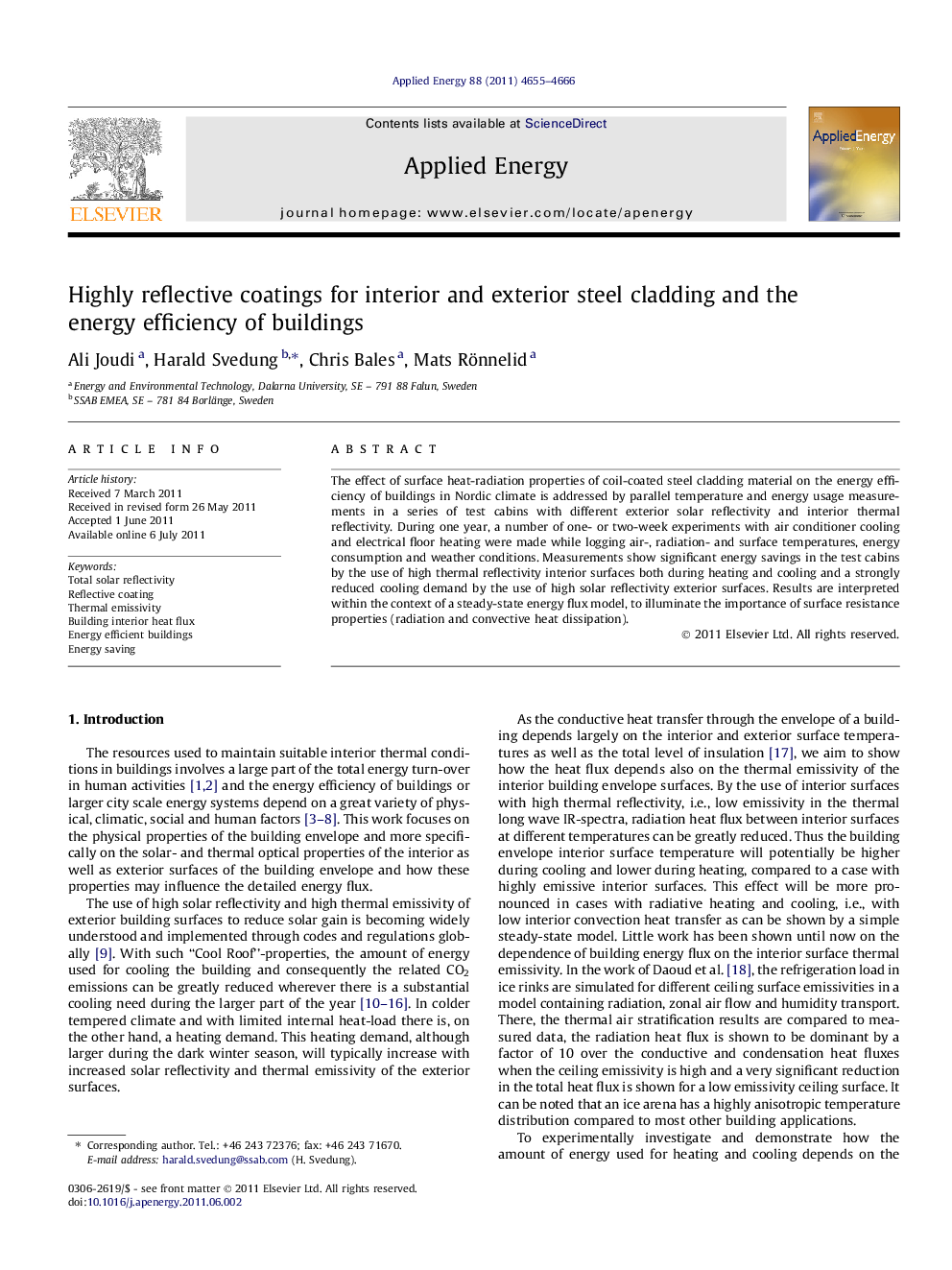| Article ID | Journal | Published Year | Pages | File Type |
|---|---|---|---|---|
| 243986 | Applied Energy | 2011 | 12 Pages |
The effect of surface heat-radiation properties of coil-coated steel cladding material on the energy efficiency of buildings in Nordic climate is addressed by parallel temperature and energy usage measurements in a series of test cabins with different exterior solar reflectivity and interior thermal reflectivity. During one year, a number of one- or two-week experiments with air conditioner cooling and electrical floor heating were made while logging air-, radiation- and surface temperatures, energy consumption and weather conditions. Measurements show significant energy savings in the test cabins by the use of high thermal reflectivity interior surfaces both during heating and cooling and a strongly reduced cooling demand by the use of high solar reflectivity exterior surfaces. Results are interpreted within the context of a steady-state energy flux model, to illuminate the importance of surface resistance properties (radiation and convective heat dissipation).
► Air, surface and radiation temperatures and the energy used for heating and cooling in test cabins are measured. ► High solar reflectivity and the low interior thermal emissivity reduces the energy used for cooling. ► Low interior thermal emissivity reduces both the energy used for floor heating and for cooling. ► Measured results are qualitatively reproduced by a simple steady-state model. ► The relevance of our results for warmer climates is indicated.
